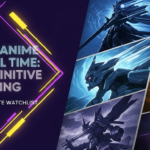Can you write a manga if you’re not Japanese? The dream of creating your own manga often feels out of reach if you’re not from Japan, leading many to question whether they can break into this iconic industry. The good news is, yes, you absolutely can create manga as a non-Japanese artist, though there are challenges to overcome.
Imagine turning your manga ideas into reality despite cultural and language barriers. In this guide, we’ll explore how international creators are making their mark, tackle the obstacles you might face, and provide actionable steps to help you succeed. From success stories of foreign mangakas to practical advice on self-publishing and collaborating with Japanese artists, we’ll cover everything you need to know to embark on your manga creation journey. Dive in to discover how you can bring your unique vision to the world of manga!
Key Facts:
1. Non-Japanese creators can and have successfully created manga.
2. Language fluency and cultural understanding are significant challenges.
3. Self-publishing and digital platforms offer accessible entry points.
4. Collaboration with Japanese artists can bridge cultural gaps.
5. The global manga market is increasingly open to international creators.
Understanding the Manga Industry: A Global Perspective
The manga industry, once a purely Japanese phenomenon, has evolved into a global powerhouse. As an aspiring mangaka (manga creator) from outside Japan, it’s crucial to grasp the landscape you’re entering. Let’s dive into the world of manga and see how it’s changing to welcome diverse voices.
The Evolution of Manga: From Local to Global
Manga’s journey from a Japanese cultural staple to a worldwide sensation is nothing short of remarkable. What started as a uniquely Japanese art form has now captivated readers across the globe. This expansion has opened doors for creators of all nationalities to contribute their voices to the medium.
Did you know? Manga now accounts for over 40% of all published works in Japan, showcasing its immense cultural significance.
Types of Manga and Their Global Appeal
Manga isn’t a one-size-fits-all medium. It spans numerous genres, each with its own set of conventions and target audiences. Here’s a quick rundown of some popular manga categories that have found fans worldwide:
- Shonen: Action-packed stories typically aimed at young male readers.
- Shojo: Romance and drama-focused narratives for young female audiences.
- Seinen: More mature themes for adult male readers.
- Josei: Sophisticated stories targeting adult women.
- Isekai: Fantasy stories where characters are transported to another world.
Understanding these categories can help you position your work in the global manga market, regardless of your nationality.
The Rise of International Manga Creators
Non-Japanese mangaka finding success in the industry – source
The manga world is increasingly embracing creators from diverse backgrounds. Take, for example, the success of Boichi, a South Korean artist who’s made waves with his work on “Dr. Stone.” His journey proves that talent and dedication can transcend national borders in the manga industry.
“The key to success in manga isn’t your nationality, but your ability to tell compelling stories through art,” says Boichi in an interview with Anime News Network.
Other notable non-Japanese creators who’ve found success include:
- Radiant by Tony Valente (French)
- Incarnation by Tao Wong (Canadian)
- Freezing by Lim Dall-young (South Korean)
These success stories underscore that the manga world is open to fresh perspectives from creators worldwide.
Breaking into the Manga Industry as a Non-Japanese Creator
Now that we’ve established that non-Japanese creators can indeed make manga, let’s explore the nitty-gritty of breaking into this competitive industry. It’s a journey filled with unique challenges and exciting opportunities.
Overcoming the Language Barrier
One of the most significant hurdles for non-Japanese mangaka is the language barrier. Japanese proficiency is often crucial, especially if you’re aiming to publish in Japan. Here are some strategies to tackle this challenge:
- Learn Japanese: Invest time in learning the language. Resources like Duolingo or WaniKani can be great starting points.
Collaborate with Translators: Partner with professional translators to ensure your work is accurately conveyed in Japanese.
Focus on Visual Storytelling: While dialogue is important, manga is a visual medium. Strong visual narratives can sometimes transcend language barriers.
Understanding Japanese Culture and Storytelling Conventions
Creating manga that resonates with Japanese audiences often requires a deep understanding of the culture. Here’s how you can bridge this gap:
- Immerse Yourself in Japanese Media: Watch anime, read manga, and engage with Japanese pop culture to understand storytelling conventions.
- Study Japanese History and Traditions: This knowledge can add authenticity to your work.
- Join Online Communities: Engage with manga fans and creators worldwide to gain insights and feedback.
Navigating the Publishing Landscape
The path to publication can differ for non-Japanese creators. Here are some avenues to explore:
- Self-Publishing Platforms: Websites like Webtoon or Tapas allow you to publish your work directly to a global audience.
International Manga Competitions: Many publishers host contests open to international participants. These can be great opportunities to get noticed.
Collaborate with Japanese Artists: Partnering with a Japanese artist can help you navigate the industry and potentially open doors to Japanese publishers.
Pitch to International Branches of Japanese Publishers: Some major manga publishers have international divisions that might be more accessible to foreign creators.
Remember, persistence is key. Many successful mangaka, Japanese or not, faced numerous rejections before their big break.
Essential Skills for Aspiring Mangaka
Creating manga requires a unique blend of artistic and storytelling skills. Let’s break down the essential abilities you’llneed to hone, regardless of your nationality.
Mastering Manga Art Techniques
Example of manga art techniques – source
Developing your artistic skills is crucial. Here are key areas to focus on:
- Character Design: Create distinctive, expressive characters that readers can connect with.
- Panel Layout: Master the art of visual storytelling through effective panel composition.
- Action Scenes: Learn to convey dynamic movement and energy in your illustrations.
- Backgrounds: Develop skills in creating detailed, immersive environments.
Pro Tip: Practice daily! Set aside time each day to sketch and refine your manga art style.
Crafting Compelling Narratives
A great manga isn’t just about beautiful art—it needs a gripping story. Here’s how to improve your storytelling:
- Study Story Structure: Understand the basics of plot development, character arcs, and pacing.
- Read Widely: Don’t limit yourself to manga. Explore various genres and mediums for inspiration.
- Develop Unique Characters: Create multi-dimensional characters with clear motivations and conflicts.
- World-Building: Craft rich, believable worlds for your stories to unfold in.
Balancing Cultural Elements
As a non-Japanese creator, you have a unique opportunity to blend cultural influences:
- Incorporate Your Cultural Background: Your unique perspective can bring fresh ideas to the manga world.
- Respect Japanese Manga Traditions: Understand and appreciate the conventions of manga while adding your own twist.
- Research Cultural Sensitivities: Be aware of potential cultural misunderstandings and avoid stereotypes.
Embracing Digital Tools
While traditional manga-making techniques are still widely used, digital tools have become increasingly popular. Consider exploring:
- Digital Drawing Tablets: Devices like Wacom or iPad Pro with Apple Pencil can streamline your workflow.
- Manga Studio/Clip Studio Paint: Industry-standard software for manga creation.
- Online Resources: Platforms like Skillshare offer courses on manga creation techniques.
Remember, these tools are just that—tools. They can enhance your work, but the core of great manga lies in your creativity and storytelling ability.
Pathways to Success: Publishing and Promoting Your Manga
Now that you’re equipped with the necessary skills, let’s explore how you can get your manga out into the world and build a fanbase, even as a non-Japanese creator.
Self-Publishing: The Digital Revolution
The digital age has democratized manga creation, offering platforms where you can publish directly to readers:
- Webtoon: This platform specializes in vertical-scrolling comics and has a global audience.
- Tapas: Another popular platform for digital comics and novels.
- Amazon Kindle: Self-publish your manga as e-books or print-on-demand.
Success Story: “UnOrdinary” by uru-chan, a non-Japanese creator, became one of the most popular series on Webtoon, proving that quality content can find an audience regardless of the creator’s nationality.
Collaborating with Japanese Artists and Publishers
Partnering with Japanese professionals can be a gateway into the traditional manga industry:
- Find a Japanese Artist: Collaborate with a Japanese artist to bridge cultural and linguistic gaps.
- Work with a Literary Agent: Agents familiar with the Japanese manga industry can help you navigate the publishing world.
- Attend Manga Conventions: Events like Comiket in Japan can be great networking opportunities.
Building Your Online Presence
In today’s digital world, your online presence can be as important as your manga itself:
- Create a Professional Website: Showcase your work and provide updates to fans.
- Leverage Social Media: Platforms like Instagram, Twitter, and TikTok can help you connect with fans and fellow creators.
- Start a YouTube Channel: Share your creative process and engage with your audience through video content.
Entering Manga Competitions
Many publishers host manga competitions that are open to international participants:
- Shonen Jump New World Manga Competition: This annual contest is open to creators worldwide.
- Silent Manga Audition: An international competition that focuses on visual storytelling without dialogue.
Participating in these contests can give you exposure and potentially lead to publishing opportunities.
Overcoming Challenges: Advice from Successful Non-Japanese Mangaka
Let’s hear from those who’ve successfully navigated the path you’re embarking on. Their experiences and advice can provide valuable insights for your journey.
Learning from the Pros
- Boichi (Dr. Stone):
“The most important thing is to never give up. I faced many rejections before finding success in Japan. Keep improving your craft and telling stories that only you can tell.” Tony Valente (Radiant):
“Embrace your unique cultural perspective. It’s what sets you apart and can bring fresh ideas to the manga world.”Felipe Smith (Peepo Choo):
“Immerse yourself in Japanese culture, but don’t lose your own identity. The blend of cultures can create something truly unique.”
Common Pitfalls to Avoid
Based on the experiences of successful non-Japanese mangaka, here are some common mistakes to watch out for:
- Overreliance on Stereotypes: Avoid using clichéd representations of Japanese culture.
- Ignoring Cultural Sensitivities: Research and be respectful of Japanese customs and taboos.
- Neglecting the Business Side: Remember that manga is both an art and a business. Learn about contracts, royalties, and copyright.
- Isolating Yourself: Engage with the manga community, both online and at conventions.
Balancing Authenticity and Adaptation
One of the biggest challenges for non-Japanese mangaka is finding the right balance between staying true to their cultural roots and adapting to the manga format. Here’s how to navigate this:
- Blend Cultural Influences: Use your unique background to bring new perspectives to manga storytelling.
- Study Japanese Storytelling Techniques: Understand the pacing and visual language of manga.
- Seek Feedback: Get input from both Japanese and non-Japanese readers to refine your work.
Remember, your unique voice is your greatest asset. Don’t be afraid to bring your personal experiences and cultural background into your manga.
The Future of Manga: A Global Perspective
As we look ahead, the manga industry is evolving, becoming more inclusive and diverse. Let’s explore what this means for non-Japanese creators and the future of manga as a whole.
Emerging Trends in Global Manga Creation
- Digital-First Publishing: With platforms like Webtoon and Tapas gaining popularity, digital manga is becoming a mainstream format.
Cross-Cultural Collaborations: We’re seeing more partnerships between Japanese and international creators, leading to unique, hybrid styles.
Diverse Representation: There’s a growing demand for stories that represent a wider range of cultures and experiences.
New Genres and Formats: Non-Japanese creators are introducing new genres and storytelling formats, expanding the definition of manga.
The Impact of Technology on Manga Creation
Technology is revolutionizing how manga is created and consumed:
- AI-Assisted Tools: Programs like Clip Studio Paint’s AI features are helping streamline the creation process.
- Virtual Reality Manga: Experimental formats are emerging, blending manga with interactive experiences.
- Global Distribution Platforms: Digital platforms are making it easier for creators to reach a worldwide audience.
Opportunities for Non-Japanese Creators
The future looks bright for international mangaka:
- Niche Markets: There’s growing interest in manga that explores diverse cultural experiences.
- Educational Opportunities: More schools and online courses are offering manga creation programs open to international students.
- Cross-Media Adaptations: Successful manga by non-Japanese creators are being adapted into anime and live-action productions.
The Role of Fans in Shaping the Future
Fans play a crucial role in the evolving manga landscape:
- Crowdfunding: Platforms like Kickstarter allow fans to directly support manga projects from creators worldwide.
- Social Media Influence: Fan engagement on social media can help non-Japanese creators gain visibility.
- Demand for Diversity: Fans are increasingly seeking out manga with diverse characters and storylines, creating opportunities for international creators.
As we wrap up, remember that the world of manga is more accessible than ever to non-Japanese creators. While challenges remain, the industry is increasingly recognizing the value of diverse voices and perspectives.
FAQs About Can You Write a Manga if You’re Not Japanese?
Q: What are the biggest challenges facing non-Japanese manga creators?
A: The biggest challenges facing non-Japanese manga creators include language barriers, understanding Japanese cultural nuances, navigating the publishing industry in Japan, and overcoming potential biases against non-Japanese artists. Additionally, mastering the unique storytelling and artistic techniques specific to manga can be challenging for those not immersed in Japanese culture from a young age.
Q: How can I learn more about Japanese culture to create authentic manga?
A: To learn more about Japanese culture for authentic manga creation, you can:
1. Immerse yourself in Japanese media (anime, manga, films, literature)
2. Study the Japanese language
3. Participate in cultural exchange programs or visit Japan if possible
4. Join online communities focused on Japanese culture and manga
5. Read books and academic papers on Japanese history, customs, and social norms
6. Collaboratewith Japanese artists or writers to gain firsthand insights
7. Attend Japanese cultural events in your local area
8. Take online courses on Japanese culture and society
Q: Is it possible to make a living as a non-Japanese manga artist?
A: Yes, it is possible to make a living as a non-Japanese manga artist, though it can be challenging. Success often depends on factors such as artistic skill, storytelling ability, marketing efforts, and the ability to build a fanbase. Many non-Japanese creators have found success through digital platforms, self-publishing, or by collaborating with established publishers. It’s important to diversify income streams, such as through merchandise sales or Patreon supporters, especially when starting out.
Q: Can non-Japanese people publish manga in Japan?
A: Yes, non-Japanese people can publish manga in Japan, although it may be more challenging due to language barriers and cultural differences. Some successful examples include Felipe Smith (American) with “Peepo Choo” and Boichi (South Korean) with “Dr. Stone.” To increase chances of publication in Japan, non-Japanese creators might consider:
1. Learning Japanese to a proficient level
2. Collaborating with a Japanese artist or writer
3. Entering manga competitions open to international participants
4. Working with a literary agent familiar with the Japanese manga industry
5. Building a strong portfolio and fanbase through self-publishing or digital platforms
Q: How can I collaborate with a Japanese manga artist?
A: To collaborate with a Japanese manga artist, you can:
1. Attend international manga and anime conventions to network
2. Join online manga creation communities and forums
3. Use social media platforms to connect with Japanese artists
4. Participate in collaborative manga projects or contests
5. Consider hiring a Japanese artist through freelance platforms
6. Learn Japanese to facilitate better communication
7. Offer complementary skills, such as writing or coloring, to form a mutually beneficial partnership
Q: What are the best platforms for self-publishing manga?
A: Some of the best platforms for self-publishing manga include:
1. Webtoon: Popular for vertical-scrolling comics with a global audience
2. Tapas: Offers both webcomics and web novels
3. ComiXology Submit: Amazon’s digital comics platform
4. Manga Plus: Shueisha’s official manga reader app
5. Pixiv: Japanese art-sharing platform with a manga section
6. Instagram: Great for building a following with short-form comics
7. Patreon: For creating a subscription-based model for your manga
8. Your own website: Offers complete control over your content and branding
Each platform has its own advantages and target audience, so it’s worth researching which one best suits your manga style and goals.
Summary
Can you write a manga if you’re not Japanese? The answer is a resounding yes. Throughout this guide, we’ve explored the challenges and opportunities for non-Japanese creators in the manga industry. From overcoming language barriers and cultural differences to mastering the unique art style and storytelling techniques of manga, the path may be challenging, but it’s certainly possible.
We’ve seen how the global manga market is evolving, embracing diverse voices and perspectives from around the world. Success stories of non-Japanese mangaka like Boichi and Tony Valente serve as inspiration, proving that talent, dedication, and a unique cultural perspective can lead to success in this competitive field.
As you embark on your manga creation journey, remember that your unique background is an asset, not a hindrance. How will you use your distinct voice to contribute to the rich tapestry of global manga? The future of manga is increasingly diverse and international – will you be part of shaping it?



